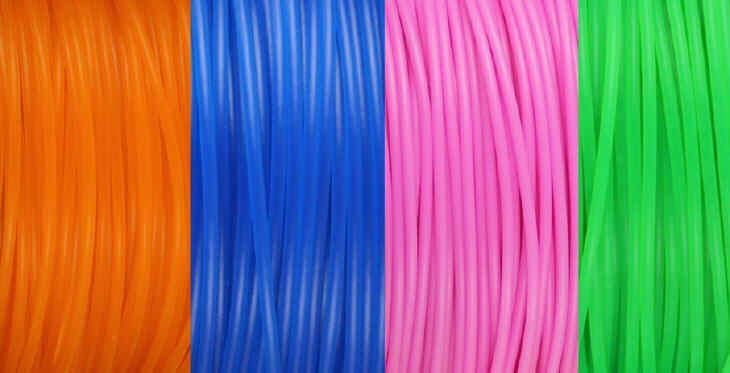
Themoplastic is plastic that becomes rubbery when heated and returns to a solid state as it cools down. This allows the plastic to be easily molded into parts. Thermoplastics are used in a variety of products, such as toys, plastic grocery bags, diapers, and even carpet.
Thermoplastic is a polymer that becomes pliable and rubbery when heated and returns to a solid state when cooled. Above Glass Transition Temperature (Tg) and below its Melting Point (Tm), the physical properties change without an associated phase change. The resulting alternating rigid crystalline and elastic amorphous regions cause the thermoplastic to become rubbery. When the thermoplastic cools, it returns to solid form.
Thermoplastic parts (such as used in automobiles) have been known to crack when exposed to cold temperatures. To prevent cracking, plasticizers can be added to thermoplastics. Plasticizers increase the fluidity of a material by interfering with crystallization to reduce brittleness.
Acrylic: Acrylic, such as Plexiglas, is used as a substitute for glass. Acrylic is sturdy and less likely to break than glass. It is used for such things as windows, glasses lenses, automobile lights, and paint.
Nylon: Nylon is a substitute for silk and is used in such items as parachutes, ropes, women's stockings, and carpet.
Polypropylene: Polypropylene is used in such items as plastic containers, diapers, sanitary pads, and plastic moldings.
Teflon: Teflon is a brand name of DuPont Corp, which is used for non-stick pans.
3D printers can use Acrylonitrile Butadiene Styrene (ABS) plastic or Polylactic Acid (PLA) plastic. The plastic is pushed through a heated nozzle just below melting point. The plastic is deposited into layers, which cool and harden. Heated print beds are often used to prevent warping and curling of the part as the plastic cools, which allows for more even cooling. ABS and PLA plastics are used to create a variety of items in 3D printing, from toys to auto parts.
To learn more about the latest in 3D Printing, check out our 3D printing.
